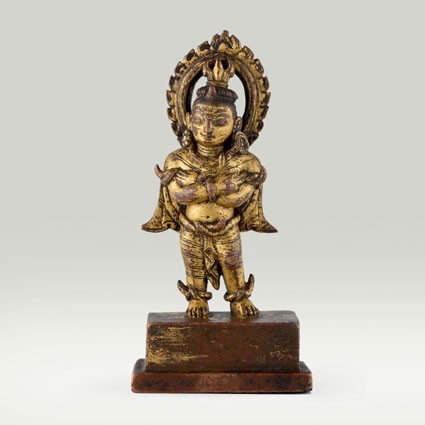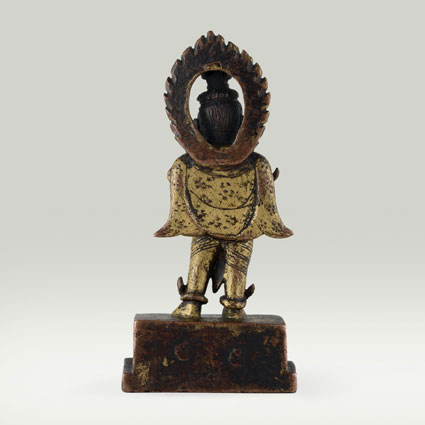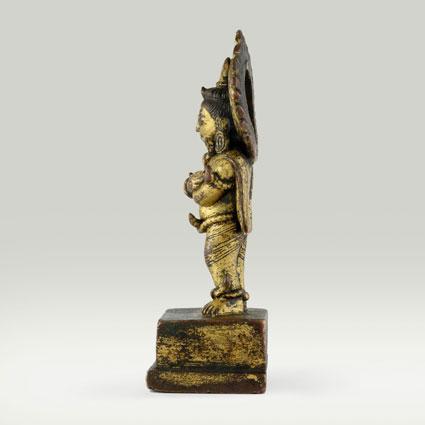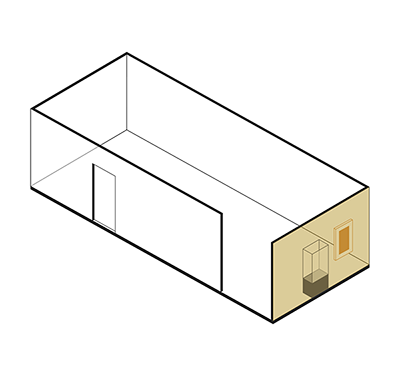ABS 130
Code: ABS 130
Country: Nepal
Style: Transitional Period
Date: 1050 - 1150
Dimensions in cm WxHxD: 6.9 x 13.5 x 4.6
Materials: Gilt copper
Vajrapurusha
Vajrapurusha who represents the "personified vajra", stands in a slightly inclined attitude (abhanga) on a rectangular pedestal and holds his arms crossed in front of his chest. He is clad in a tiger skin (vyaghracarma)that is tied around the hips with a snake, and wears a shawl around the shoulders with the pointed ends hanging down at the back. The knot of his hair is topped by the prominent finial of a five-pronged scepter (pancasucika-vajra). He wears earrings, a necklace, bracelets on the upper arms and wrist, as well as anklets, all composed of snakes (naga).
The vajra (diamond scepter) is of great antiquity that was first associated with the vedic God Indra and only later with the Mahayana-Buddhist Bodhisattva Vajrapani. In Nepal a vajra cult personified by Vajrapurushaexisted independently of the Vajrapani cult. During about the 9th or 10th centuries a consolidation of the two cults appears to have taken place. The consolidation is best illustrated by Vajrapani statues where he touches the head of Vajrapurusha in contrast to Vajrapani statues where the Bodhisattva holds a vajra.
Vajrapurusha who represents the "personified vajra", stands in a slightly inclined attitude (abhanga) on a rectangular pedestal and holds his arms crossed in front of his chest. He is clad in a tiger skin (vyaghracarma)that is tied around the hips with a snake, and wears a shawl around the shoulders with the pointed ends hanging down at the back. The knot of his hair is topped by the prominent finial of a five-pronged scepter (pancasucika-vajra). He wears earrings, a necklace, bracelets on the upper arms and wrist, as well as anklets, all composed of snakes (naga).
The vajra (diamond scepter) is of great antiquity that was first associated with the vedic God Indra and only later with the Mahayana-Buddhist Bodhisattva Vajrapani. In Nepal a vajra cult personified by Vajrapurushaexisted independently of the Vajrapani cult. During about the 9th or 10th centuries a consolidation of the two cults appears to have taken place. The consolidation is best illustrated by Vajrapani statues where he touches the head of Vajrapurusha in contrast to Vajrapani statues where the Bodhisattva holds a vajra.






